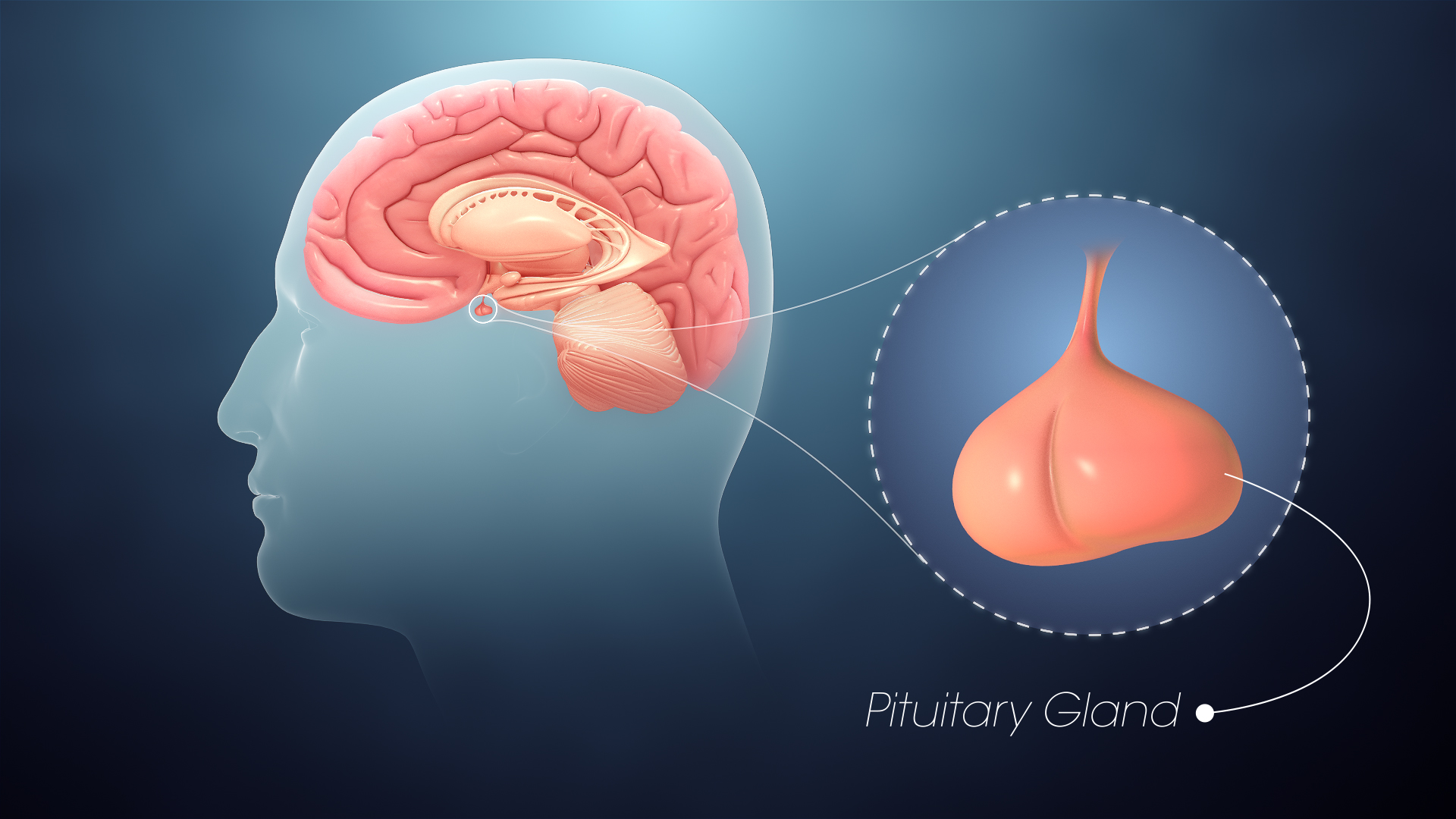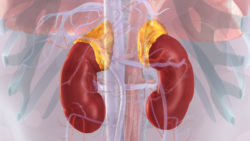The pituitary gland is oval in shape and small in size. It’s present behind the nose, closer to the underside of human brain. It is connected to the hypothalamus via a stalk-like structure.

The hypothalamus regulates the release of hormones from the pituitary gland.
Anatomy and functions
It can be categorized into two parts, namely the anterior and posterior lobes.
Anterior lobe
It consists of various types of cells that produce and release several types of hormones, including some below:
- Growth hormone: This hormone regulates the physical development and growth. It can activate the growth in most of the tissues.
- Thyroid-stimulating hormone: It activates the thyroid to release thyroid hormones. The thyroid gland and the hormones it releases are important for the metabolism.
- Adrenocorticotropic hormone: It activates adrenal glands to form cortisol and other hormones.
- Follicle-stimulating hormone: It is associated with estrogen secretion and the egg cells’ growth in women. It is vital for the sperm cell formation in men, as well.
- Luteinizing hormone: It is associated in the formation of testosterone in men and estrogen in case of women.
- Prolactin: It aids women who are breastfeeding in producing the milk.
- Endorphins: It is understood to be associated to the brain’s “pleasure centers”. It has properties for relieving pain.
- Enkephalins: They are closely linked to endorphins and they have similar effects in pain relief.
- Beta-melanocyte-stimulating hormone: It aids to activate the increased coloration of the skin in response to UV radiation exposure.
Posterior lobe
It secretes hormones as well. These hormones are commonly produced in hypothalamus and until released are accumulated in the posterior lobe.
Hormones housed in the posterior lobe are namely:
- Vasopressin: It helps the human body conserve water and prevent dehydration. It is also named as, antidiuretic hormone.
- Oxytocin: It activates the release of breast milk. It stimulates uterus’ contractions also during the labor time.
Conditions of the Pituitary Gland
There are various conditions that may affect the pituitary gland. Most of them are often caused by a tumor found either in the pituitary gland or around it. It often impacts how the hormones get released.
Some of the examples of disorders related to the of pituitary gland are outlined below:
- Pituitary tumors: They are commonly non-cancerous. However, they commonly interfere how the hormones get released. They may also put some pressure on other areas in the brain, resulting in headaches or issues with vision.
- Hypopituitarism: In this condition, the pituitary gland produces either one or more of its hormones in either small quantity or not at all. It may affect functions of the reproductive system or growth.
- Acromegaly: In this particular disorder, the pituitary gland produces excess of growth hormone. It may lead to abnormal growth, especially of the feet and hands. It’s most commonly linked to pituitary tumors.
- Diabetes insipidus: It may be caused due to some issues with the release of vasopressin. It most commonly occurs because of head injury or tumor or surgery. Often people with this disorder pass large quantity of urine in very diluted form. They may feel as if they are thirsty for water or any other fluids.
- Cushing’s disease: In this condition, the pituitary gland releases excess of adrenocorticotropic hormone. It may result in easy bruising, weakness, high blood pressure, and weight gain. This is most commonly caused by a tumor in the pituitary gland or near it.
- Hyperprolactinemia: In this disorder, the blood contains very high amount of prolactin. This may lead to infertility and a reduced sex drive.
- Traumatic brain injury: This condition occurs due to a sudden blow to brain. There is sometimes a damage to the pituitary gland and results in issues with memory, behavior or communication, depending on the injury.
Disclaimer: The information in no way constitutes, or should be construed as medical advice. Nor is the above article an endorsement of any research findings discussed in the article an endorsement for any of the source publications.
Sources-
- https://www.healthline.com/human-body-maps/pituitary-gland
- https://www.healthline.com/human-body-maps/pituitary-gland#conditions
Adrenal glands are small and triangular in shape and sit on top of each kidney and are also known as the suprarenal glands. Therefore, each of us have two adrenal glands.
Read More..










